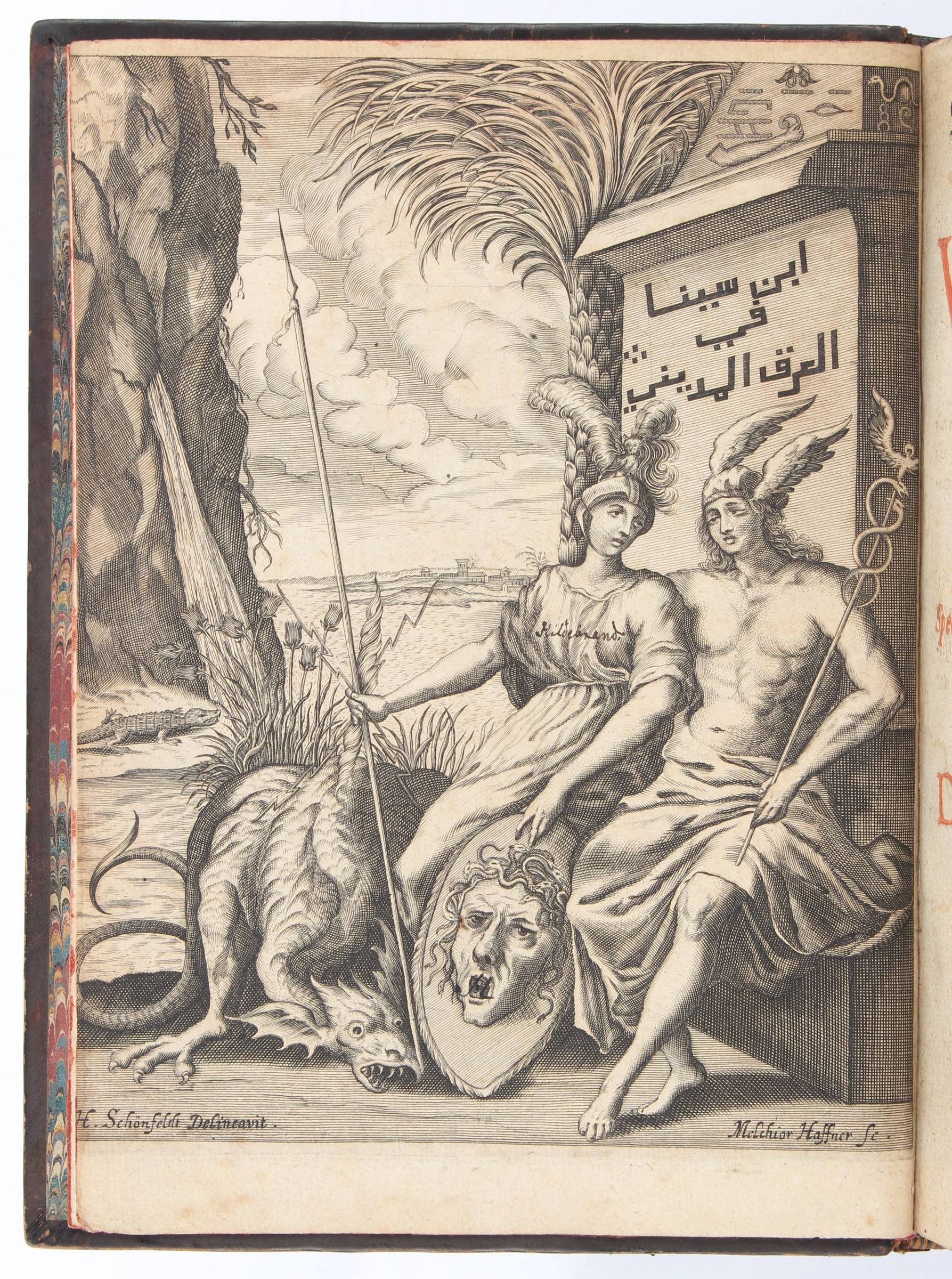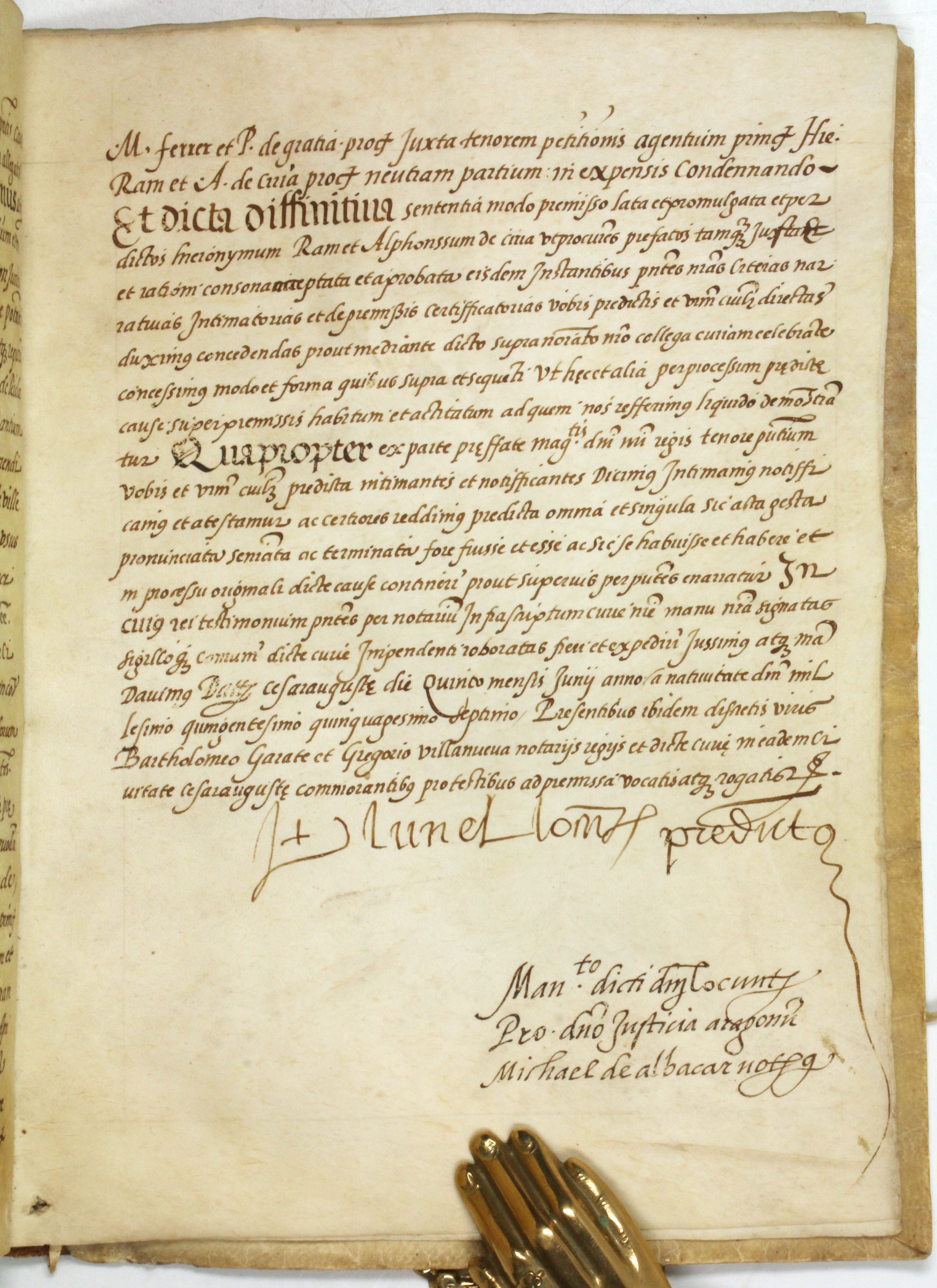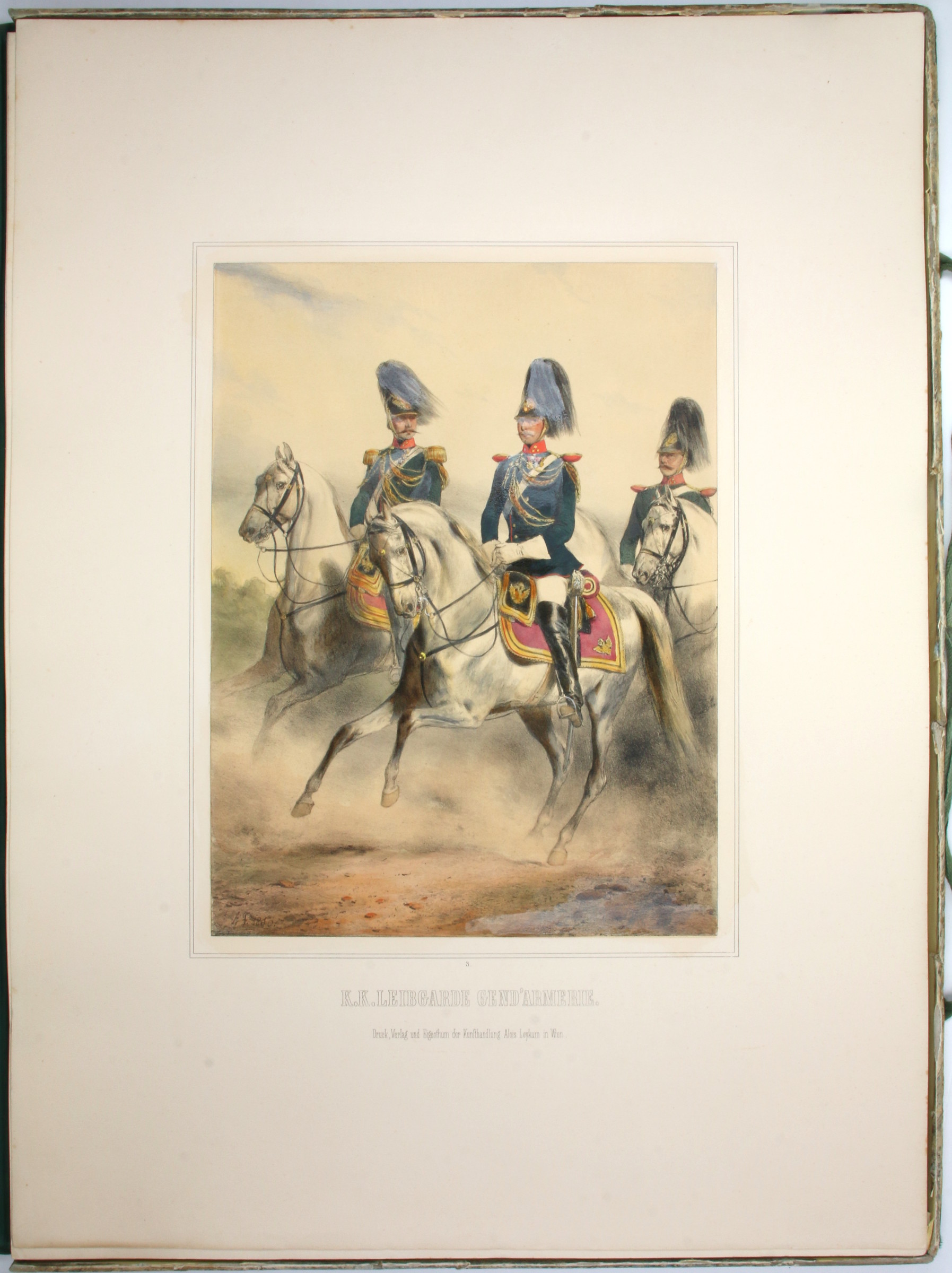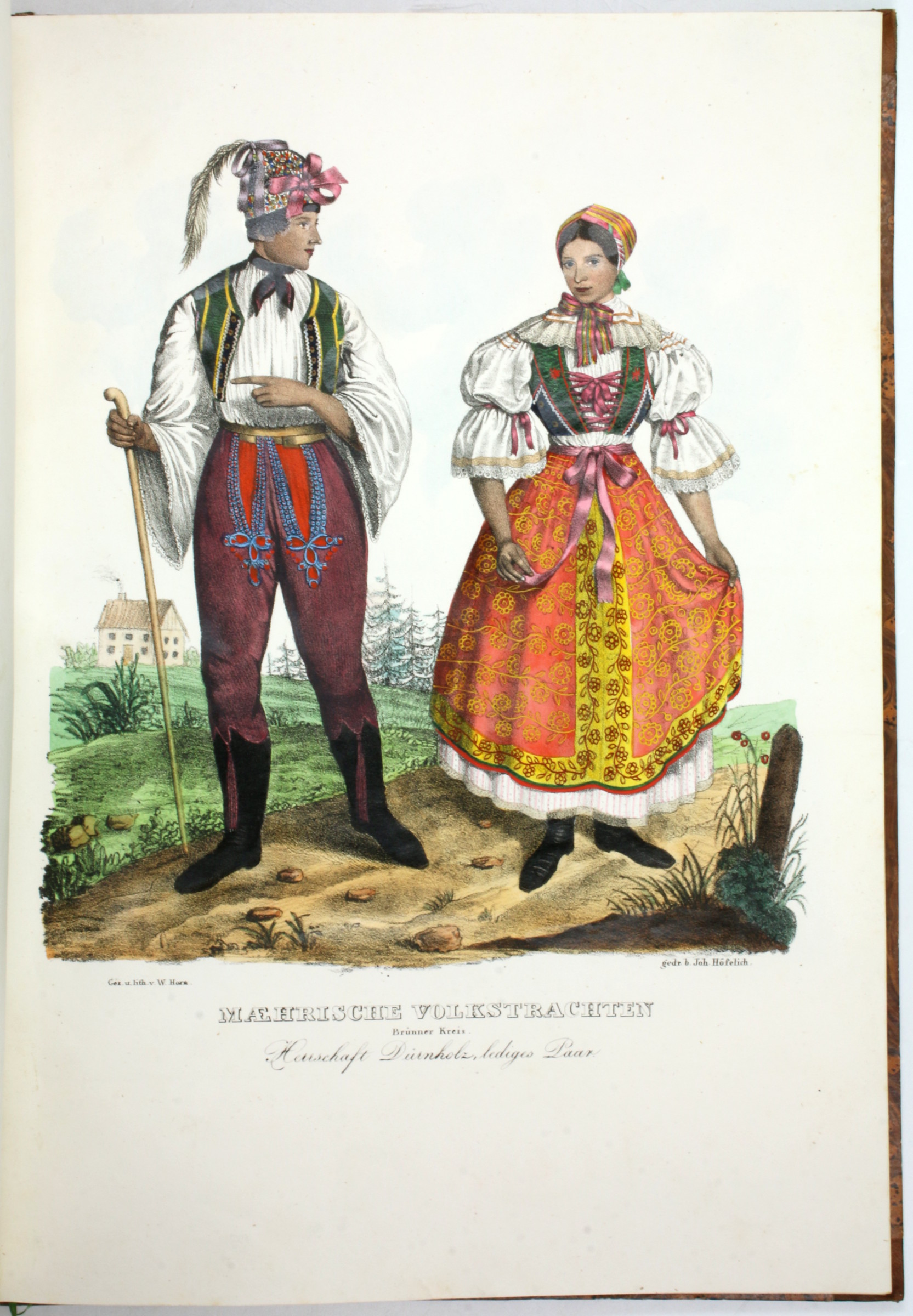
Only edition of this rare monograph, an "exhaustive survey of dracontiasis" (Garrison/M.). Infection with the tropical disease dracontiasis (or dracunculiasis) is caused by the larvae of the Medina or Guinea worm; a connection with contaminated drinking water was suspected even in antiquity and by medieval Arabic physicians.
The German physician and oriental linguist G. H. Welsch (1624-77) inserts the Arabic text from Ibn Sina's Qanun (book IV, fen III, paragraph II, chapters 21-22) and earlier Latin translations by Gerardus Cremonensis and Andrea Alpago before offering his own translation, with extensive commentaries. The text includes quotations from 28 languages (with a separate index), including Ethiopian (in Hebrew type), Brazilian, Mexican, Japanese, and Chinese (in Persian transliteration) etc. From page 395 onwards the work comprises Georg Cunelius's "De Dracunculis" (first published in Basel in 1589). The engravings show examples of worm balls in classical depictions (e.g., Medusa) and suggested remedies (drawing the worm from the vein). Also contains the usually lacking portrait of Empress Claudia Felicitas, wife of Leopold I.

The first fourteen verses of the Gospel of John, beginning with the famous phrase that has become one of the best-known sayings of Western culture: "Initium Sancti Evangelii secundum Ioannem. In principio erat verbum, et verbum erat apud deum" ("In the beginning was the Word, and the Word was with God, and the Word was God"), ending with "et verbum caro factum est et habitavit in nobis et vidimus gloriam eius gloriam quasi unigeniti a Patre plenum gratiae et veritatis. Amen Amen Amen" ("And the Word was made flesh, and dwelt among us, and we beheld his glory, the glory as of the only begotten of the Father, full of grace and truth"). The "Word", a translation of the Greek "logos", is widely interpreted as referring to Jesus Christ.
At centre right of the leaf is a drawing, probably by the hand of the scribe, showing a late 13th century lady wearing a crespine or snood (hairnet), fillet (headband) and neckerchief, holding what appears to be a gift bouquet of flowers.
Anniversary publication celebrating the fountain system of Sanssouci Park, which finally had become operational in 1842. While the complex system of pumping houses and reservoirs was conceived under Frederick II, hydraulics in the mid-18th century was still in its infancy, and only the invention of the steam engine solved the problem a century later.
Artelt served as Royal Prussian master of machinery. His commemorative work comprises a historical and a highly detailed technical part. A meticulous plan shows not only the more than 60 facilities built above ground, but also the pipeline system with its various diameters, faucets, boilers, etc. Several of the plates show splendid fountains in full operation that have since disappeared, been damaged or deactivated. The fountains of Sanssouci have been undergoing redevelopment for many years.
First edition on this global investigation of the African slave trade, including a chapter dedicated to the challenges and successes of the Zanzibar treaties which had recently taken effect along the East African and Arabian Peninsula coastlines.
The volume opens with a large folding map of the African continent, its surrounding seas hand-painted in blue watercolour. Most of the continent itself is shaded in grey, and its caption reads, "The dark shade indicates those parts where Slavery and the Slave-trade more or less prevail. The uncoloured parts where freedom exists." One such place was the Sultanate of Zanzibar, whose experiments in suppressing the slave trade are discussed in Chapter IX.
First edition of this work on north-west Africa from the Maghreb to the Gold Coast, proposing an Arab-centric interpretation of a geopolitical landscape little understood by Europeans. Its author, the Irishman William Cooley, was aided and provided with Arabic texts and translations by the Spanish orientalist Pascual de Gayangos y Arce (1809-97).
Includes a large folding map titled "Sketch of a Map to illustrate the Arab Geography of Negroland", which delineates the African landscape from Tripoli to Cape Verde. Its most particularly detailed routes are along river systems, but also sketches out a landscape of Saharan place names and routes, including the territory of the Bedouin Beni Hassan tribes, who migrated thence in roughly the 11th century (with their origin placed by some scholars in Yemen). Saharan caravan routes run along place names such as Beni Wareth, Weinhilún, Aúkarit, and Támadelt.
Much of the text is devoted to the histories of ancient states like Ghana and Mali, as well as tracing the well-known travels of Ibn Battuta. Cooley was famous for his stubborn insistence on a few major errors in African geography, such as his opinion that there could be no snow-capped mountains on the continent (despite being presented with evidence of Mount Kilimanjaro), or that Lake Nyasa (also known as Lake Malawi) and Lake Tanganyika formed a single body of water. However, he spoke Kiswahili and was instrumental in debunking a famously (but, to this day, debatably) fraudulent account of a voyage through Africa by Frenchman Jean-Baptiste Douville (1797-1837).
First edition of this work on the southern regions of the African continent, attempting to sketch a landscape heavily influenced - but little understood by - Europeans. Its author William Cooley was an Irishman who had himself travelled to some parts of Africa, and in his work he attempts to sketch some of his own routes as well as the journeys of Livingstone and other more famous names through sub-equatorial Africa.
Cooley was famous for his stubborn insistence on a few major errors in African geography, such as his opinion that there could be no snow-capped mountains on the continent (despite being presented with evidence of Mount Kilimanjaro), or that Lake Nyasa (also known as Lake Malawi) and Lake Tanganyika formed a single body of water. However, he spoke Kiswahili and was instrumental in debunking a famously (but, to this day, debatably) fraudulent account of a voyage through Africa by Frenchman Jean-Baptiste Douville (1797-1837).
Teaching and preaching Islam: this anthology of sermons and religious devotions is notable for its inclusion of stories about women preaching to men on matters of religion. The collection is the work of an Egyptian Sufi ascetic named Shu'ayb al-Hurayfish (d. 1398 CE), who was himself a preacher; his work has been analysed by modern experts in order to glean a better understanding of the Muslim preaching traditions in al-Hurayfish's Egypt.
Unlike many of his contemporaries, such as the famous Ibn al-Hajj (ca. 1250-1336 CE), al-Hurayfish did not go out of his way to condemn women who preached freely to mixed audiences. Instead, in al-Hurayfish's work, women may give private audiences to one or more male listeners, to whom they dispense wisdom. This occurs within the specific confines of a culturally acceptable religious activity: that of a private space and within the practice of the Sufi siyaha, or "spiritual wandering", which was central to Sufi religious practice, but nevertheless shows a marked departure from other contemporary views. Al-Hurayfish's stories tell, for example, of a devout Sufi woman who improvises powerful speeches to a male listener. At times in the text the man asks her to speak, and at others she lectures of her own volition to her willing audience.
This manuscript copy is quite an early example, and is written on watermarked Ottoman laid paper which can be dated to the first half of the 17th century; despite its historical importance, manuscripts of this work are rare, and fewer still can be dated prior to 1700 CE.

A celebrated 14th century textbook of Hanafi law, immensely popular in India and Central Asia, and likely copied in Ming Dynasty China or in what is now Uzbekistan. Commonly known simply as "al-Husami", this influential manuscript on Muslim jurisprudence was penned by a scribe named Ghani bin Mir bin Muhammad less than 150 years after the author's death, making this a very early copy.
As his name suggests, Husami ibn Muhammad al-Akhsikathi (d. 1247 CE) was a specialist in Muslim law from the city Akhsikath. Now abandoned after centuries of decline and a devastating earthquake, in the High Medieval period Akhsikath was an important political and religious center in the Fergana Valley, later home to the likes of Babur (1483-1530 CE), founder of the Mughal Empire.
Al-Hurami has spawned numerous commentaries studied across India and Central Asia, where its popularity was entwined with that of the Hanafi school of jurisprudence, one of the four major schools of Muslim law. That the manuscript has Uzbek and potentially Chinese connections is thus sensible in this context: Hanafi was the most popular school of thought in much of Central Asia and certainly among Muslims in Ming Dynasty China, where the Gedimu school of Islam had early on adopted Hanafi for its legal interpretations. The late Uzbek ownership inscription on the first leaf reinforces its Asian connections.
First edition. Introduction to horse breeding prepared by one of the most prolific writers on equestrian matters in 18th century Germany with particular attention to the cross-breeding of European and Arabian horses.
Intended as a guide to noblemen and stud-farm owners, the book describes the unique qualities of foreign breeds, not failing to point out that to obtain an Arabian horse is somewhat of a luxury considering their price and the effort of transfer from the Arabian desert to the European continent. Includes illustrated observations on suitable stable construction, as well as some expert advice on veterinary matters.
Spine damaged, corners somewhat bumped, edges rubbed. Interior well preserved.
Overflowing with gold, King Cyrus directs the construction of the Temple of Jerusalem in this elaborately illuminated initial from the leaf of a Latin Bible, ca. 1507. The leaf comprises Ezra 1:1-2:62, Chapter Two being preceded by a four-line rubric from Bede's commentary on Nehemiah and Ezra (Migne, PL , XCI, 1850, col. 817). It is dominated by this flamboyant and unusual scene of Cyrus flanked by councillors, and features four more roundels of gilt in the margins (a little inked heron perches upon one) with distinctive inked marginal decorations of the late 15th and early 16th century. The product of skilled craftspeople, both the illuminated scene and the gothic bookhand are very fine, on high quality vellum.
Variously attributed to Austria or Germany (Augsburg in particular), this leaf is generally accepted to be the product of a Cistercian or Carthusian house, based on the scribal use of the punctus flexus. Remarkably, this leaf can also be narrowly dated: originally part of a multi-volume Latin Bible, the first volume, containing Genesis-Ruth, survives intact (Baltimore, Walters Art Museum, MS W.805), and includes a scribal date of 1507. When catalogued in the Schøyen Collection, it was tentatively suggested that this Bible, and thus this leaf, could be sourced to Augsburg, and specifically to St. Ulrich's and St. Afra's Abbey. This corresponds to the 1987 Ferrini catalogue's attribution of this leaf to Augsburg; Ferrini also drew comparisons to the work of the illuminator Leonhard Beck and scribe Leonhard Wagner. Stylistically, its palette of pinks, greens, blues, and stocky but animated figures does suggest an origin in the German-speaking principalities at the dawn of the 16th century.

Unrecorded remnants of al-Andalus: a previously unknown 16th century lawsuit over medieval Muslim irrigation ditches. Penned in a tidy, humanistic Latin hand on vellum - with crucial legal points clarified in the local Castilian-Aragonese vernacular - the manuscript records a dispute rooted in the region's Muslim history; more specifically, in the remnants of its Muslim infrastructure. As early as the 8th century, Muslim Spain underwent extensive land reforms, including massive irrigation projects. These were so crucial to the landscape of the Iberian Peninsula that they were still in use long after the Reconquista, and were certainly still important to the landscape and livelihoods of the people of the town of La Almunia de Doña Godina in 1557, as this document makes readily apparent.
The declaration of a lawsuit was filed by a jurist from Zaragoza, micer Francisco Lunel (who appears again in legal records to disinherit his son in 1570), on behalf of the inhabitants of La Almunia de Doña Godina, who have undertaken various works to ensure the irrigation of the orchards - all-important in Aragon - in the neighbouring villages. These villages included Ricla, for which the people of La Almunia made major repairs to an irrigation ditch, and from which they demand financial compensation. The defendants are the heirs of the Lord of Ricla, namely his son-in-law, Diego de los Cobos y Mendoza, local landowner and newly awarded First Marquess of Camarasa (d. 1576). The defendants agree to financial compensation if the local populace will agree to repair a mill as well.
The legal proceedings provide a snapshot of the economic landscape of the Crown of Aragon and the depths of its Muslim roots. Many of the terms for irrigation used in the manuscript come from Arabic words: the officials appointed to oversee compliance with the agreements are canal overseers called "çabacequies", from the Arabic "sahib al-saqiya" (master of canals/waterwheels). Another section refers to an "açut" (a diversion dam) on the Jalón River, a direct adoption of the Arabic term "al-sudd". The use of Castilian-Aragonese is also notable, as it was used to repeat the most important legal points of the Latin.
From the foremost military artists of their era: a complete series of brightly hand-coloured lithographs by two renowned students of the Viennese Akademie der bildenden Künste, dedicated to Emperor Franz Joseph and comprising 36 plates showcasing Austro-Hungarian military uniforms from all different sections of the newly reformed armies.
Karl August von Pettenkofen (originally Pettenkoffer) became a student at the Viennese Academy in 1834, but a decade later joined the military and served in the Dragoon Regiment of Louis I of Bavaria. During this time the artist found inspiration in the uniforms of the Austrian army, and dedicated the following two decades to producing watercolours and lithographs of military garb. His fellow student was Anton Strassgschwandtner (attended the Academy from 1843-45), who in a similar fashion to his collaborator chose for his main artistic focus the depiction of military and hunting scenes. Together, the two men captured Austro-Hungarian uniforms and armaments in sharp detail and with an eye for accuracy, as well as great artistic skill - Only six copies of any edition are held in institutions listed on OCLC, and of these only one is a Leykum edition.

From the foremost military artists of their era: a series of brightly hand-coloured lithographs by two renowned students of the Viennese Akademie der bildenden Künste, dedicated to Emperor Franz Joseph and comprising a complete set of 36 plates showcasing Austro-Hungarian military uniforms from all different sections of the newly reformed armies. This was previously the Donaueschingen copy, with the library's stamp on the title.
Karl August von Pettenkofen (originally Pettenkoffer) became a student at the Viennese Academy in 1834, but a decade later joined the military and served in the Dragoon Regiment of Louis I of Bavaria. During this time the artist found inspiration in the uniforms of the Austrian army, and dedicated the following two decades to producing watercolours and lithographs of military garb. His fellow student was Anton Strassgschwandtner (attended the Academy from 1843-45), who in a similar fashion to his collaborator chose for his main artistic focus the depiction of military and hunting scenes. Together, the two men captured Austro-Hungarian uniforms and armaments in sharp detail and with an eye for accuracy, as well as great artistic skill - Only six copies of any edition are held in institutions listed on OCLC, and of these only one is a Leykum edition.

First edition of this exceedingly scarce collection of costume plates from the various regions of Austro-Hungarian Moravia, now part of the Czech Republic, by the fine lithographer Wilhelm Horn (1809-91). Only two copies of this work are listed in institutions on OCLC, with one housed at the Kunstbibliothek Staatliche Museen zu Berlin and the other at the Morgan Library in New York. This copy's complete set of thirty lithograph plates has been sumptuously hand-coloured in strikingly bright hues, heightened with gum arabic. The fine details are carefully picked out, including detailed embroidery on both men and women's clothing.
The life of an Hungarian hussar in full colour: rare, complete set of the splendidly coloured plates prepared by Johann Nepomuk Hoechle (1790-1835), one of the most prolific painters of military themes of his time, lithographed by Josef Kriehuber (1800-76), an artist particularly famous for his high-quality lithographic portraits. The appealing scenes illustrate key events in the career of an Hungarian hussar, beginning with recruitment, showing the young man carousing with his recruiters, drink in hand. The plates further depict exercising on horseback, a night-time ambush, and an action-packed battle scene captioned "a heroic deed", showing the hussars triumphing over bayonet-wielding enemies set against a smoke-filled sky and a town ablaze with fire. In the last two scenes the young hussar is decorated by the Emperor on the battlefield before returning home to his family, who are eager to examine his medal of honour.
Some light surface soiling and creasing, small ink stain to upper cover. A well-preserved specimen of military art, and an homage to the Hungarian hussars.

Rare, complete set of these splendid costume plates originally prepared for the King of Württemberg: a fine example of visual folk history. Each of the sumptuously coloured plates depicts an administrative division of the Kingdom of Württemberg, featuring couples and families in traditional Swabian garb, some accompanied by dogs, equipped with baskets of fruits or eggs, prayer books or tools, set against an idyllic provincial scenery showing farm houses, hilltop castles, churches, piety columns, neighbouring towns, woods, and rivers.
The plates are as follows: Ebingen, Tübingen, Calw, Cannstadt, Ochsenhausen, Leutkirch, Ellwangen, Göppingen, Urach, Marbach, Biberach, and Ulm. The aquatint etchings are based on a series of watercoloured pen-and-ink drawings commissioned by the king. The precise year of issue is not clear: Thieme/Becker dates the "Volkstrachten" to 1824, while Lipperheide cites 1810-15 as the date of issue. Possibly the drawings were prepared as early as 1810, with the etchings following a couple of years later.
Loosely enclosed is a 20th century typed note stating that the Staatsgalerie in Stuttgart has certified the present set to be complete as issued.
Some light marginal foxing. A fine copy.







